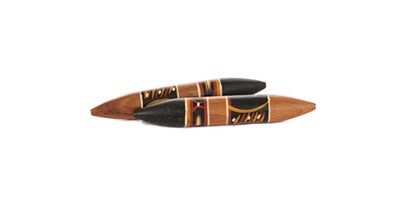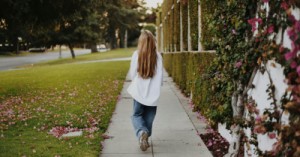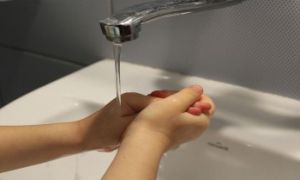Music is a universal language—and in Aboriginal and Torres Strait Islander cultures, it’s also a powerful vessel for storytelling, ceremony, and connection. Introducing Aboriginal music into early learning environments not only enriches children’s understanding of Australia’s First Nations peoples but also fosters respect, curiosity, and cultural awareness from a young age.
Why Aboriginal Music Matters in Early Childhood
Aboriginal and Torres Strait Islander peoples have used music to pass down knowledge for over 65,000 years. From traditional instruments like clapsticks and yidaki (didgeridoo) to modern genres like hip hop and soul, music reflects both the history and the living culture of First Nations communities.
Incorporating these sounds into early learning helps children:
- Connect with diverse cultural perspectives
- Develop rhythm, listening, and movement skills
- Engage in meaningful conversations about identity and heritage
Traditional Instruments in the Learning Environment
- Clapsticks are one of the most accessible traditional instruments. Made from native wood, they’re used to maintain rhythm during songs and storytelling. Children can use them during yarning circles or group music sessions to explore beat and coordination.
- Yidaki (Didgeridoo) is a wind instrument traditionally played by men in Arnhem Land. While not all Aboriginal nations used the yidaki, it’s become a symbol of cultural expression. Educators can introduce its sound through recordings or live demonstrations, emphasizing its ceremonial role and regional origins.
Contemporary Aboriginal Music
Modern First Nations artists like Emma Donovan, Mitch Tambo, Baker Boy, and Troy Cassar-Daley blend traditional themes with contemporary genres. Their music offers rich opportunities to explore language, storytelling, and social issues in a child-friendly way.
Resources like The Yulang Effect provide curated playlists of First Nations music for classrooms, including:
- Children’s songs like “Taba Naba”
- Lullabies such as “Ninganah Lullaby”
- Gamilaraay-language versions of Australian classics
Books and Activities That Celebrate Sound
Isaiah Firebrace’s book Come Together, Again is a vibrant celebration of First Nations music and dance. It introduces children to:
- Leaf-whistling (used to mimic bird calls)
- Body percussion (clapping, stomping, tapping)
- Famous Aboriginal ballet dancers and hip hop artists
Pair the book with activities like:
- Collecting gum leaves for whistling
- Watching body percussion videos like The Lion King rhythm game
- Inviting local Aboriginal musicians or dancers for live performances
Creating a Respectful and Inclusive Space
When bringing Aboriginal music into your learning environment:
- Acknowledge the traditional custodians of the land
- Use resources created by First Nations educators and artists
- Celebrate both traditional and contemporary expressions of culture
- Encourage children to ask questions and share their reflections
Music is more than entertainment—it’s a bridge to understanding. By embedding Aboriginal music into early learning, we help children grow into respectful, informed, and culturally aware citizens.
References:
CELA Amplify! Blog – Exploring Aboriginal Music in the Classroom
The Yulang Effect—First Nations Music for Australian Classrooms
Come Together, Again by Isaiah Firebrace
Monash University—The Power of Song: Sharing First Nations Languages Through Music
ABC iView – Play School: Yarning and Dreaming







 As an Educator in Australia, your pay rate falls under the Children’s Services Award 2010. This award states the minimum amount that an employer can
As an Educator in Australia, your pay rate falls under the Children’s Services Award 2010. This award states the minimum amount that an employer can When working as a qualified Early Childhood Teacher (with a university degree) within a service, your rate of pay will come from the Educational Services
When working as a qualified Early Childhood Teacher (with a university degree) within a service, your rate of pay will come from the Educational Services When working as a Diploma Qualified Educator your pay rate is from the Children's Services Award 2010. This Award states your minimum rate of pay
When working as a Diploma Qualified Educator your pay rate is from the Children's Services Award 2010. This Award states your minimum rate of pay When working as a Cert 3 Qualified Educator, your pay rate is from the Children's Services Award 2010. This Award states your minimum rate of
When working as a Cert 3 Qualified Educator, your pay rate is from the Children's Services Award 2010. This Award states your minimum rate of Educational Leaders play a crucial role in their early childhood service by ensuring that the educational program aligns with best practices and supports the holistic
Educational Leaders play a crucial role in their early childhood service by ensuring that the educational program aligns with best practices and supports the holistic In early childhood education and care, ratios are more than a technicality—they are a frontline safeguard. Every child deserves responsive supervision, emotional connection, and developmental
In early childhood education and care, ratios are more than a technicality—they are a frontline safeguard. Every child deserves responsive supervision, emotional connection, and developmental With the new national child safety reforms kicking in on 1 September 2025, early childhood services like yours have a real opportunity to lead the
With the new national child safety reforms kicking in on 1 September 2025, early childhood services like yours have a real opportunity to lead the Here’s a comprehensive Mobile Phone and Smart Watch Policy tailored for early childhood education and care (ECEC) services in Australia, aligned with the latest 2025
Here’s a comprehensive Mobile Phone and Smart Watch Policy tailored for early childhood education and care (ECEC) services in Australia, aligned with the latest 2025 The Sea of Fish Challenge is a national initiative that invites children, educators, families, and communities to create and display fish artworks as a symbol
The Sea of Fish Challenge is a national initiative that invites children, educators, families, and communities to create and display fish artworks as a symbol Across the early childhood education and care sector, educators are sounding the alarm: current staffing ratios are insufficient to deliver safe, meaningful, and developmentally appropriate
Across the early childhood education and care sector, educators are sounding the alarm: current staffing ratios are insufficient to deliver safe, meaningful, and developmentally appropriate


